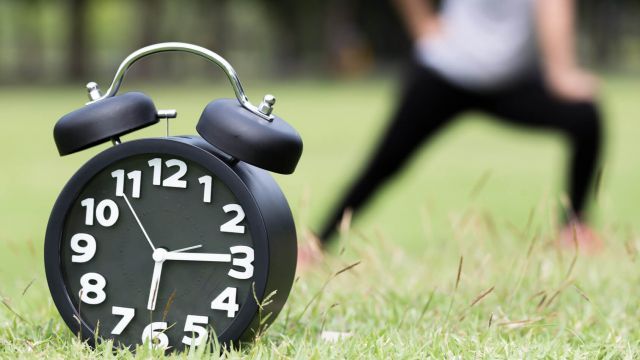
No one denies that exercise is important for optimal health. Exercise helps regulate the endocrine system, keeps excess weight off, and helps boost mood and metabolism. All around, exercise is one of the healthiest things you can do.
However, far more often than we might like to admit, we skip exercise for other activities. Traditional exercise takes 30 minutes or more to provide beneficial effects.
But what if there was a way to get the maximum benefits of exercise in a third of the time? What if there was an exercise routine you could complete that would keep you healthy and took just ten minutes a day? According to research, this may just be possible with high-intensity interval training (HIIT).
The science behind HIIT
According to numerous studies on interval workouts, the exercise routine may be more effective on the body’s health than traditional exercise. How is this possible? It comes down to simple biology.
HIIT requires that the exerciser raise their heart rate to about 85 to 95 percent of their maximum heart rate. This is difficult to do, but when the heart beats faster, more blood is pumped through the body and more oxygen is used. Regular exercise can actually improve the muscular structure of the heart, making it pump blood more efficiently.
According to a 2009 study published in Exercise and Sport Science Reviews, HIIT is equal, and may be superior, to traditional exercise. HIIT exercises are able to expand the heart and improve the function of the heart in less time than traditional exercise. By pushing the heart to its maximum potential, it is forced to adapt faster.
Another study from 2012 published in The Journal of Physiology found that when study participants followed high-intensity interval training, their mitochondrial density increased (the ability of the cells to produce energy). Mitochondria are responsible for burning fat and carbohydrates during exercise. A higher level of cellular energy allows the body to work more efficiently in completing exercise tasks, which builds skeletal muscles faster.
The basics of high-intensity interval training
During high-intensity interval training, the exerciser must exert as much energy as possible in short bursts. In studies, significant success was seen when the exercisers performed at full potential for four minutes then rested for four minutes. Repeat this pattern about four times for a complete and effective HIIT workout. You can also try exercising intensely for about 10 minutes at a time without a break.
Remember, you should feel completely exhausted after your HIIT workout. If you don’t, then you aren’t using as much energy as you should be.
A simple HIIT workout you can do at home
For this routine, complete as many reps of each exercise as you can with proper form in 20 seconds. Rest for 10 seconds, then repeat the entire process.
Exercise one: Push-ups
Lie on the floor in plank position and slowly lower your body to the ground without touching the floor. Push back up to complete one rep.
Exercise two: Squat jumps
Stand in a squat position with the hips back and knees forward. Jump up as high as you can and land in the squat position to complete one rep.
A burpee consists of four exercises linked together with jumps.
- Start with your feet next to your hands on the ground in a crouched position.
- Jump back into a push-up position.
- Jump up into a squat position.
- Jump up to a standing position with your arms in the air.
- This completes one rep.
Exercise four: Sprinting in place
Run in place at maximum intensity for 20 seconds to complete one round.
Exercise five: Jump lunges
Start in the standard lunge position with one leg extended in front, with the knee bent at a 90-degree angle, and the other leg extended behind. Quickly jump up and switch the positions of your legs to complete one rep.
How often should I complete HIIT workouts?
According to studies, HIIT workouts are most effective when they are infrequent. HIIT workouts, when done properly, are hard on the body and require substantial rest time. Most studies suggest only completing a HIIT workout two to three times a week at maximum, with some fitness experts suggesting that a once-a-week HIIT workout is enough to provide benefit.
Between HIIT workouts, supplement with lower intensity exercise routines.
If you are currently stuck on a weight-loss plateau, or you want to take your exercise routine to the next level, start adding HIIT routines today.
—The Alternative Daily
Sources:
http://news.health.com/2015/07/15/this-no-gym-hiit-workout-gets-the-job-done-in-10-minutes
http://templatelab.com/high-intensity-interval-training/
https://www.unm.edu/~lkravitz/Article%20folder/HIITvsCardio.html
http://www.ncbi.nlm.nih.gov/pubmed/19550205
http://www.ncbi.nlm.nih.gov/pmc/articles/PMC3381816


